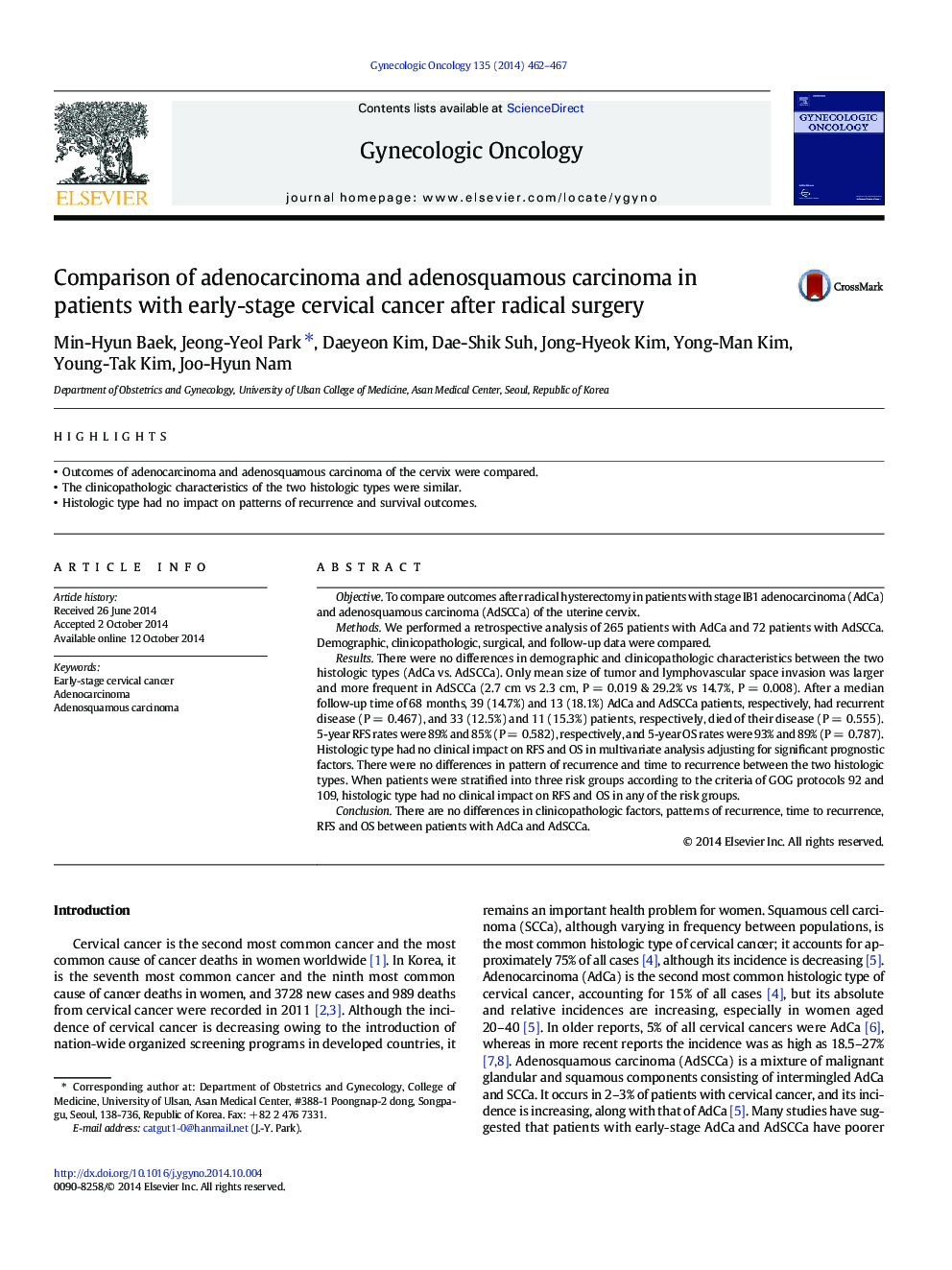| Article ID | Journal | Published Year | Pages | File Type |
|---|---|---|---|---|
| 6185043 | Gynecologic Oncology | 2014 | 6 Pages |
â¢Outcomes of adenocarcinoma and adenosquamous carcinoma of the cervix were compared.â¢The clinicopathologic characteristics of the two histologic types were similar.â¢Histologic type had no impact on patterns of recurrence and survival outcomes.
ObjectiveTo compare outcomes after radical hysterectomy in patients with stage IB1 adenocarcinoma (AdCa) and adenosquamous carcinoma (AdSCCa) of the uterine cervix.MethodsWe performed a retrospective analysis of 265 patients with AdCa and 72 patients with AdSCCa. Demographic, clinicopathologic, surgical, and follow-up data were compared.ResultsThere were no differences in demographic and clinicopathologic characteristics between the two histologic types (AdCa vs. AdSCCa). Only mean size of tumor and lymphovascular space invasion was larger and more frequent in AdSCCa (2.7Â cm vs 2.3Â cm, PÂ =Â 0.019 & 29.2% vs 14.7%, PÂ =Â 0.008). After a median follow-up time of 68Â months, 39 (14.7%) and 13 (18.1%) AdCa and AdSCCa patients, respectively, had recurrent disease (PÂ =Â 0.467), and 33 (12.5%) and 11 (15.3%) patients, respectively, died of their disease (PÂ =Â 0.555). 5-year RFS rates were 89% and 85% (PÂ =Â 0.582), respectively, and 5-year OS rates were 93% and 89% (PÂ =Â 0.787). Histologic type had no clinical impact on RFS and OS in multivariate analysis adjusting for significant prognostic factors. There were no differences in pattern of recurrence and time to recurrence between the two histologic types. When patients were stratified into three risk groups according to the criteria of GOG protocols 92 and 109, histologic type had no clinical impact on RFS and OS in any of the risk groups.ConclusionThere are no differences in clinicopathologic factors, patterns of recurrence, time to recurrence, RFS and OS between patients with AdCa and AdSCCa.
